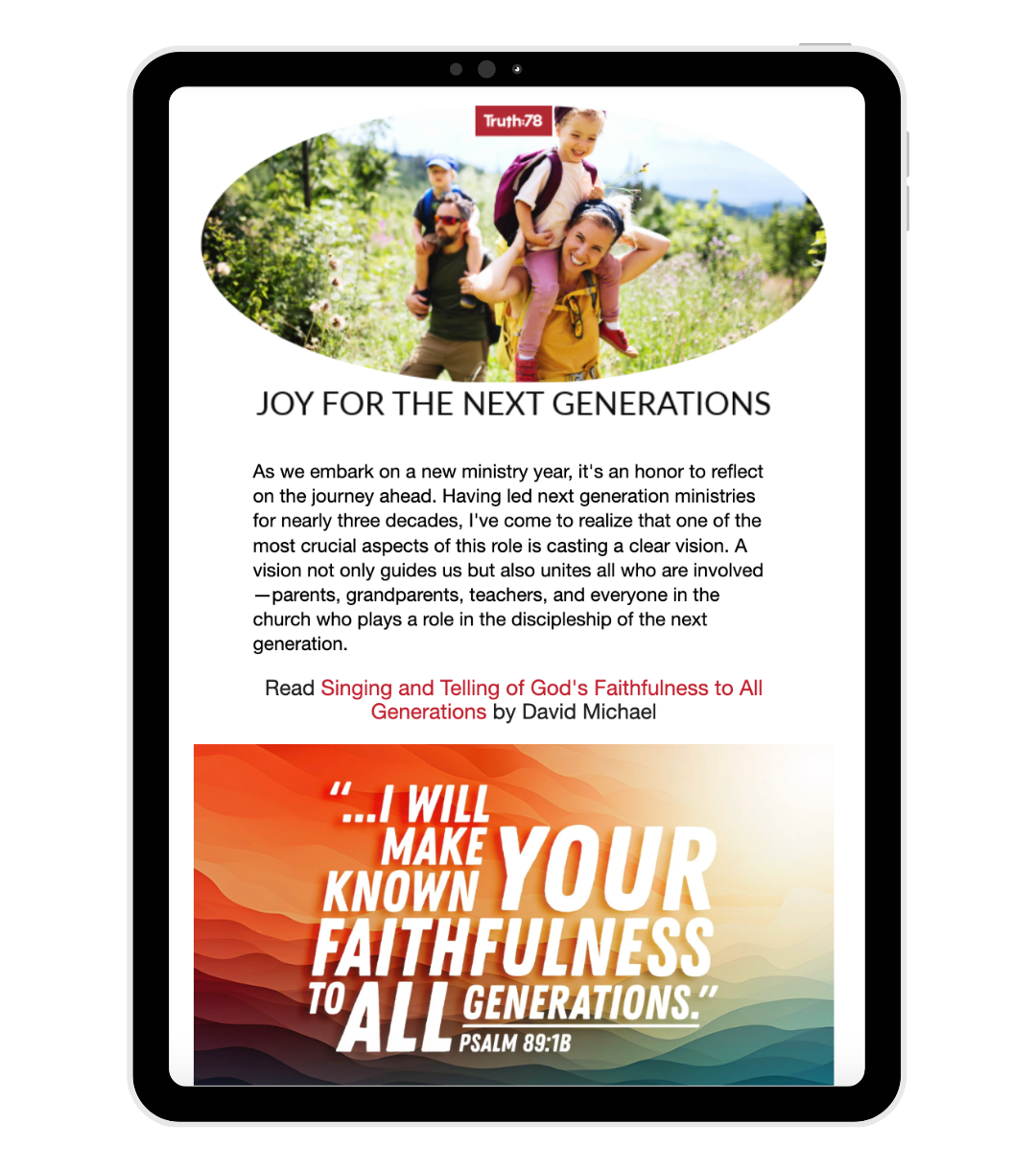 Many years ago, I watched a movie that, in a sense, took my breath away. It had beautiful imagery, a storyline that gripped your heart as you were swept into the characters’ thoughts, feelings, joys, and sorrows. Soon ,I found myself even cheering the characters on as the story unfolded. That’s the power of great story-telling…and the danger also. How so? Because this particular movie told a story alright, but it was a story that, when examined by a discerning eye, was glorifying sin, unfaithfulness, and adultery!
The example points to the following: Great storytelling can be a great gift, or a great danger. This should especially be kept in mind when we use storytelling as a means to convey the narrative of the Bible to children.
A Gift
Great storytelling can bring the Bible alive, as it were, and encourage the mind and heart to be in awe of God as we see His ways and purposes unfold. Great storytelling can promote love and trust in the living Savior. It can stir up longings to follow Jesus and walk in His ways. In short, great storytelling can be used to convey and explain essential doctrines of the Christian faith by communicating them in a compelling, exciting, memorable, and comprehensible manner for children. The stories of the Bible “sweep them off their feet,” as God’s majesty and saving work is displayed. What a gift!
A Danger
Great storytelling can convey skewed, confused, or even false doctrine. How? By presenting the story in a manner that is so pleasing to the mind and heart—gripping a child’s emotions—that it leaves a lasting, but faulty impression regarding the essential doctrines of the Christian faith. Doctrines such as the true nature of God, the essence of sin, and the meaning of the cross become lost, distorted, or confused. Adults and children may so well love the way the story is being told, they no longer see and assess it in light of the truth. And, depending on the extent that the storytelling deviates from the clear words of Scripture, it can be downright dangerous.
So, teachers and parents: Yes, look for Bible resources that offer your students and children great storytelling, but make sure that the story being told really is great— that it aligns with the truth of Scripture!
Here are 5 things to look for in evaluating story-based Bible resources:
Many years ago, I watched a movie that, in a sense, took my breath away. It had beautiful imagery, a storyline that gripped your heart as you were swept into the characters’ thoughts, feelings, joys, and sorrows. Soon ,I found myself even cheering the characters on as the story unfolded. That’s the power of great story-telling…and the danger also. How so? Because this particular movie told a story alright, but it was a story that, when examined by a discerning eye, was glorifying sin, unfaithfulness, and adultery!
The example points to the following: Great storytelling can be a great gift, or a great danger. This should especially be kept in mind when we use storytelling as a means to convey the narrative of the Bible to children.
A Gift
Great storytelling can bring the Bible alive, as it were, and encourage the mind and heart to be in awe of God as we see His ways and purposes unfold. Great storytelling can promote love and trust in the living Savior. It can stir up longings to follow Jesus and walk in His ways. In short, great storytelling can be used to convey and explain essential doctrines of the Christian faith by communicating them in a compelling, exciting, memorable, and comprehensible manner for children. The stories of the Bible “sweep them off their feet,” as God’s majesty and saving work is displayed. What a gift!
A Danger
Great storytelling can convey skewed, confused, or even false doctrine. How? By presenting the story in a manner that is so pleasing to the mind and heart—gripping a child’s emotions—that it leaves a lasting, but faulty impression regarding the essential doctrines of the Christian faith. Doctrines such as the true nature of God, the essence of sin, and the meaning of the cross become lost, distorted, or confused. Adults and children may so well love the way the story is being told, they no longer see and assess it in light of the truth. And, depending on the extent that the storytelling deviates from the clear words of Scripture, it can be downright dangerous.
So, teachers and parents: Yes, look for Bible resources that offer your students and children great storytelling, but make sure that the story being told really is great— that it aligns with the truth of Scripture!
Here are 5 things to look for in evaluating story-based Bible resources:
- How much creative license does the author use in retelling the Bible story? In light of Scripture, could the events have actually happened this way? When pondering what might have happened, does the author use appropriate language such as, “Abraham might have been thinking…” “Esther may have said something like,…”
- Does the way the story is told contradict clear biblical teaching in any way?
- Does the story attempt to explain the message (the truth of the text), or does it tend to change the message?
- Does the storytelling use child-friendly language that is careful to keep the biblical integrity of the text?
- Is the story told in a way that takes into account the whole counsel of God? For example, a Bible story may be used to emphasize the love of God. However, is His love conveyed in such a way that does not negate the totality of God’s nature—His holiness, justice, power, etc.
Now the word of the LORD came to Jonah the son of Amittai, saying, “Arise, go to Nineveh, that great city, and call out against it, for their evil has come up before me.” (ESV)
Here is how this same passage is communicated in a very popular and well-written (in regard to storytelling) children’s storybook Bible:God had a job for Jonah. But Jonah didn’t want it. “Go to Nineveh,” God said, “and tell your worst enemies that I love them.”
How does this way of telling the story measure up to the “5 things to look for”? Is this a regular problem throughout the resource, or a “once in a while” occurrence? If it’s the latter, a parent or teacher can easily correct and explain this. But if it’s a regular problem throughout the resource, you may want to reconsider whether the resource is appropriate for your children. Again: Yes, look for Bible resources that offer your students and children great storytelling, but make sure that the story being told really is great—that it aligns with the truth of Scripture!(Image courtesy of digidreamgrafix at FreeDigitalPhotos.net.)






